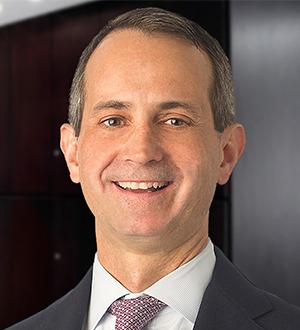This is an enormously significant period for American health care, as the industry’s ecosystem evolves at an ever-accelerating pace. Four factors—how health care is owned, organized, delivered, and paid for—provide a conceptual framework for understanding this rapid change.
We call this the era of “Health Care Prime” because we recognized those four factors in Amazon’s announcement of its new health care venture with JPMorgan and Berkshire Hathaway earlier this year. Dealmaking and innovation are the most significant change agents in this new health care economy, and Amazon’s initiative will likely spur a considerable amount of both.
Understanding M&A and Innovation
The first six months of 2017 saw the announcement or consummation of 472 mergers-and-acquisitions health care deals, a record number. Over the same six months in 2018, the figure was 530, a 12.3 percent increase on the previous year’s record. We see no signs that this trend will slow anytime soon.
As for innovation, the health care and technology sectors are integrating in ways that now disrupt traditional health care rather than sustain it. New market entrants (such as Amazon), new health-delivery models (telehealth, for example), and new technologies (think artificial intelligence) are just a few of the recent innovations driving this health care transformation.
Ownership and Organization
Complex federal and state regulatory schemes mean the main players in the traditional health care economy have long been health systems, physicians, insurers, drug manufacturers, and the U.S. government (Medicare and Medicaid). In the era of Health Care Prime, by contrast, opportunities will abound for nontraditional players to become owners in the health care market.
Private-equity ownership: Ownership of health care ventures by private-equity organizations is increasing significantly. Health care private-equity activity in 2017 reached $42.6 billion in disclosed value, and the number of deals rose to 265, up 17 percent from a year earlier. Inefficiencies in traditional health care delivery and sector fragmentation make it highly attractive as a target for private-equity investment.
The integrated-care continuum: Evolving market pressures are requiring health care participants to transform their business models and diversify. Companies are expanding and collaborating along a dominant theme of the “integrated-care continuum.” The addition of ancillary service lines, joint ventures between providers and non-providers, and the blending of providers and insurers are illustrative of this shift.
Delivery
Traditional settings for health care delivery are rapidly changing, and companies are rapidly adopting from other industries a variety of models: virtual health, concierge medicine, urgent care, and employer on-site clinics.
Consumerism
A growing sense of consumerism, with patients viewed as customers making choices about an array of health care options, is also occurring. Providers are giving patients the ability to choose how, where, and from whom they get their care. Indeed, many patients now demand the same convenience and transparency from their health care providers that they routinely get when buying other products and services.
The Shift from Inpatient to Outpatient Care
Care is increasingly shifting from inpatient to outpatient settings. Admissions for inpatient care have dropped 12 percent over the last decade, and one of every four hospitals now faces inpatient-care operating losses.
Payment
The standard payment model in health care has long been fee-for-service, in which more procedures mean more money and the fee has no relationship to the outcome. This is rapidly being replaced, however, by pay-for-performance, in which the fee is directly related to the quality of the care and the outcome.
Value-Based Care
Providers are rightly loath to accept outcome-based payments unless they have the ability to control those outcomes. The obvious way for them to do so is via vertical consolidation, through which they capture the entire health care continuum. As care moves to a value-based payment environment, then, providers are likely to become boosters of the integrated-care continuum.
Data Revolution
The rise of big data is disrupting health care in all the right ways. This data revolution has the potential to improve patient outcomes dramatically. At the same time, in a value-based environment, better outcomes lead to higher payments for providers, creating a virtuous circle.
Conclusion
This new era of Health Care Prime is patient-centered. The opportunities to improve patient care are exponential, as are the financial opportunities for those who lead the revolution. Innovation, along with mergers and acquisitions, will be the primary drivers of health care as this vast, vital industry moves from the fallow valleys of old ways to the sunny uplands of the new.
The authors would like to thank Patrick Pilch, managing director and national leader of the BDO Center for Healthcare Excellence & Innovation, and Ygal Schuller, legal project manager for Polsinelli’s Business Department, for their contributions to this article.




























